Understanding Operational Amplifiers: Fundamentals, Uses, and Applications
2024-09-20
2236
Catalog

Figure 1: Operational Amplifier Schematic
Operational Amplifiers: A Component in Electronics
Operational amplifiers, or op-amps, are crucial building blocks in electronic circuits. These devices are used in both analog and digital systems, performing tasks like adding, subtracting, integrating, and differentiating signals. Because of this setup, an op-amp can take a small input signal and produce a much larger output signal, making it useful in a variety of applications where signals need to be boosted.
Op-amps are found in a wide range of uses, from basic signal processing tasks like filtering and conditioning to more complex operations involving frequencies from DC to high-speed signals. Their high input impedance means they don't draw much current from the signal source, which helps preserve the original signal. For example, in a sensor circuit, the op-amp's high input impedance ensures that it won't interfere with the sensor's signal. At the same time, the op-amp's ability to amplify weak signals allows the system to handle and analyze even the faintest inputs accurately.
Characteristics of Operational Amplifiers
Operational amplifiers, or op-amps, have several important characteristics that directly affect their performance in circuits. This gain can be precisely controlled using external feedback, which allows engineers to adjust the amplification for specific needs. The op-amp also has low output impedance, which makes it highly efficient at driving connected devices, such as actuators or audio systems, without losing signal strength.
Op-amps also offer a wide bandwidth, meaning they can amplify signals over a broad range of frequencies while preserving the signal's quality. This makes them ideal for applications with fast-changing signals. Additionally, they have a high Common-Mode Rejection Ratio (CMRR), which allows them to filter out noise and interference that affect both inputs equally, ensuring a clear and accurate output signal. Low inherent noise is another advantage, in fields like medical instrumentation or high-precision equipment, where even small amounts of noise can impact the system's performance.
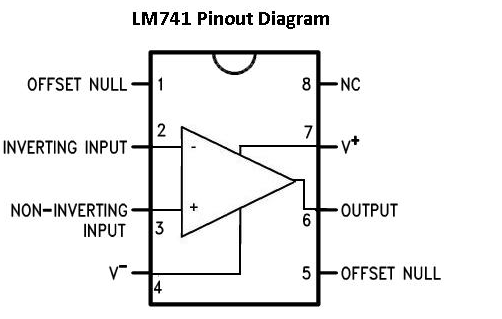
Figure 2: LM741 Pinout
Pin Configuration of the LM741 Operational Amplifier
The LM741 operational amplifier is known for its simple and reliable eight-pin configuration, making it an excellent example to understand how op-amp pins work.
Pin 1 is for offset null adjustment. This is used when precise voltage alignment helping to reduce input offset voltage in applications that require exact measurements.
Pin 2 is the inverting input. Any signal applied here is inverted in relation to ground, meaning the output will be the opposite of this input.
Pin 3 is the non-inverting input. Signals applied here are amplified without inversion, allowing a comparison between this and the inverting input.
Pins 4 and 7 connect the op-amp to the power supply, with Pin 4 for the negative voltage and Pin 7 for the positive voltage.
The amplified signal is delivered through Pin 6, which outputs the amplified version of the input signal. Pin 5, although labeled for offset null in some other op-amp models, doesn't have a function in the LM741. Pin 8 is for frequency compensation. It plays a role in keeping the amplifier stable, especially in high-frequency applications where oscillations might otherwise occur.
Types of Operational Amplifiers and Their Uses
Operational amplifiers (op-amps) come in different types, each designed for specific functions and applications. Here’s a look at the main varieties:
• Voltage Feedback Op-Amps - are known for their high gain and input impedance. These amplifiers are used in applications where it’s important to boost a weak signal without pulling current from the source. They are commonly found in audio systems and circuits that process sensor signals.
• Current Feedback Op-Amps - offer high bandwidth and fast response times. They are designed for handling high-frequency signals, making them perfect for radio frequency (RF) and video applications. Their ability to respond quickly to changes in signal helps in situations that demand fast, precise adjustments.
• Differential Op-Amps - amplify the voltage difference between two inputs while rejecting noise that affects both inputs equally.
• Instrumentation Op-Amps - are built for accuracy and stability. They are used in precision measurement systems, such as medical and scientific instruments, where even small errors can have serious consequences. These op-amps keep the amplified signal as close to the original as possible, with minimal noise.
• Programmable Op-Amps - offer flexibility by allowing users to adjust settings like gain and bandwidth via external programming. This feature is useful for prototypes or systems that need to adapt to different conditions or requirements.
• Power Op-Amps - are built to handle higher power levels. These op-amps can drive heavy loads like motors and speakers, and are commonly used in industrial and audio settings.
Operational Amplifier Applications
Operational amplifiers (op-amps) are in a broad spectrum of electronics because they can modify and improve signals across many systems.
Signal Conditioning: Op-amps are in preparing signals from sensors before they’re converted into digital data. They amplify and clean the signal, ensuring accuracy when the signal is processed digitally.
Audio Amplification: In audio equipment, op-amps boost sound signals to drive speakers and headphones, ensuring that the audio remains clear and high-quality, even at louder volumes. This is in both home audio devices and professional sound systems.
Voltage Regulation: Op-amps stabilize power supply outputs by maintaining consistent voltage, even when the load varies. This is in protecting sensitive components and ensuring devices run smoothly, which is required for everything from computers to industrial machines.
Oscillators and Filters: Op-amps can create specific signal waveforms as oscillators, useful in timing and signal generation in digital circuits. As active filters, they help refine signals by isolating or enhancing certain frequencies while reducing noise, making them for communications and audio systems.
Analog-to-Digital Conversion: Op-amps help prepare analog signals for more accurate conversion to digital data. They condition the signal before it’s processed by analog-to-digital converters (ADCs), which is required for any system where precise digital data is required, such as in measurement systems or digital sensors.
Comparators: Op-amps can be used as comparators to compare voltage levels in circuits, allowing devices to react when certain thresholds are met.
Instrumentation Amplifiers: Op-amps play a central role in instrumentation amplifiers, which amplify small signals in noisy environments. This is in scientific, medical, and industrial applications, where accuracy in reading small signals can directly affect the quality of the data collected.
Op-Amps: Strengths and Challenges
Operational amplifiers, or op-amps, are popular in electronic design because of their flexibility and strong performance across a wide range of applications. One major benefit of working with op-amps is the ability to use simulation tools, such as PSPICE, to model and test circuits before building them.
Performance factors like frequency response, how the op-amp interacts with the load, and stability must be carefully managed. If not handled correctly, these elements can lead to issues like oscillation, which can disrupt the circuit’s function. Understanding and managing these variables requires strong expertise in analog design. Engineers need this knowledge not only to build new circuits but also to troubleshoot and fine-tune existing ones.
Designing circuits with op-amps involves precise planning and thorough testing. Throughout the design process, simulation tools help engineers model how the op-amp will behave under different conditions, making it easier to spot potential problems before the physical build stage. This method saves both time and resources, improving the overall efficiency of development. Having the skill to integrate and optimize op-amps in electronic designs is highly valued and shows the role these components play in modern technology.

Figure 3: Types of Op-Amp
How to Select the Right Op-Amp for Your Application?
Choosing the right operational amplifier (op-amp) for your project involves evaluating several technical factors. Needs to consider gain, bandwidth, input and output impedance, offset voltage, noise levels, and the temperature range the op-amp will operate in. Other considerations, such as power supply voltage and packaging type (surface-mount or through-hole), as well as whether the op-amp is a single, dual, or quad configuration, are also important for circuit compatibility. Popular op-amps like the LM741, LM358, and LM386 are go-to options for general applications, offering solid performance. For more precise tasks, models like the TL081 or AD620 are favored due to their lower noise and higher accuracy, making them perfect for sensitive signal processing tasks, such as those found in instrumentation and precision audio systems.
Conclusion
Operational amplifiers stand as cornerstones in the architecture of contemporary electronic circuits, driving advancements in a multitude of technological arenas. Through the detailed exploration of their characteristics, configurations, and types, it becomes evident that op-amps are not just components but catalysts of innovation in electronics. As technology progresses, the role of op-amps continues to evolve, responding to the escalating demands for accuracy and functionality in electronic devices.
 ABOUT US
Customer satisfaction every time. Mutual trust and common interests.
ABOUT US
Customer satisfaction every time. Mutual trust and common interests.
function test. The highest cost-effective products and the best service is our eternal commitment.
Hot Article
- Are CR2032 and CR2016 Interchangeable
- MOSFET: Definition, Working Principle and Selection
- Relay Installation and Testing, Interpretation of Relay Wiring Diagrams
- CR2016 vs. CR2032 What’s the difference
- NPN vs. PNP: What's the Difference?
- esp32 vs stm32: which microcontroller is better for you?
- LM358 Dual Operational Amplifier Comprehensive Guide: Pinouts, Circuit Diagrams, Equivalents, Useful Examples
- CR2032 VS DL2032 VS CR2025 Comparison Guide
- Understanding the Differences ESP32 and ESP32-S3 Technical and Performance Analysis
- Detailed Analysis of RC Series Circuit
 2N3055 Transistor Guide
2N3055 Transistor Guide
2024-09-24
 Comprehensive Guide to Active Filters
Comprehensive Guide to Active Filters
2024-09-19
Frequently Asked Questions [FAQ]
1. What is the Difference Between an Amplifier and an Operational Amplifier?
An amplifier is a general term for any device that boosts the power of a signal, typically used for audio or radio signals. An operational amplifier (op-amp) is a specific type of amplifier designed for very precise applications, offering high input impedance and low output impedance. While both amplify signals, op-amps are integrated circuits designed specifically for signal processing, often with the ability to perform mathematical operations like addition, subtraction, and integration.
2. What is the Power Source of Operational Amplifier?
Operational amplifiers are typically powered by a DC voltage supply. This supply can be a single voltage source or dual voltages (one positive and one negative relative to a common ground). The choice between single or dual supplies depends on the specific requirements of the application, such as the need for a bipolar output range.
3. What is the Symbol of the Operational Amplifier?
The symbol for an operational amplifier is a triangle pointing to the right with two inputs and one output. The top input, marked with a plus (+), is the non-inverting input, and the bottom input, marked with a minus (-), is the inverting input. The output is on the right side of the triangle.
4. What is the Difference Between an Inverting and a Non-Inverting Op-Amp Configuration?
In an inverting configuration, the input signal is applied to the inverting (-) input. The output signal is inverted relative to the input, meaning it shifts phase by 180 degrees. This setup typically includes a feedback resistor from the output to the inverting input. In a non-inverting configuration, the input signal is applied to the non-inverting (+) input. The output signal remains in phase with the input, maintaining the same direction but amplifying the magnitude. A feedback resistor is also used here, but it connects from the output back to the inverting input.
5. What is the Difference Between a Single-Supply and Dual-Supply Op-Amp?
Single-supply op-amps are powered by one voltage source and typically operate between the ground (0V) and a positive voltage. They are used when the signal is always positive or zero. Dual-supply op-amps use two voltage sources, one positive and one negative. This arrangement allows the output to swing both above and below zero, suitable for AC signals that fluctuate around zero. This setup is for applications needing a full bipolar output that includes both positive and negative swings.
Hot Part Number
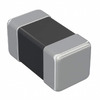 UMK105CG561JVHF
UMK105CG561JVHF CGA3E2X7R1H103M080AD
CGA3E2X7R1H103M080AD C3225X6S0G107M250AC
C3225X6S0G107M250AC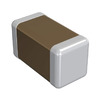 GRM1555C2A9R4CA01D
GRM1555C2A9R4CA01D GCM1555C1H361JA16D
GCM1555C1H361JA16D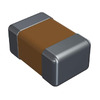 08053A391FAT2A
08053A391FAT2A CC1206JKNPODBN220
CC1206JKNPODBN220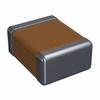 12101U271FAT9A
12101U271FAT9A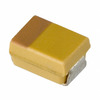 TAJR225K016YNJ
TAJR225K016YNJ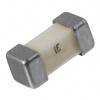 0454003.MR
0454003.MR
- TSC87251G2D-L16CB
- BD6669FV-E2
- HCPL-902J-000E
- ISL3152EIBZ-T
- MAX31855JASA+
- RT0402DRE07147RL
- TPS62140ARGTR
- REF198GSZ-REEL
- LP3981IMM-2.8/NOPB
- TSB82AA2PGE
- FDN352AP
- T491B335K025ZT7622
- VND830AEPTR-E
- SUCW32415BP
- OPA827AIDGKR
- HMC742HFLP5E
- 827-22-006-10-003101
- T491D226K035ZTZ012Z045
- MC74VHC541DT
- STM32L151RCT6TR
- BCM3408KMLG
- LP3986BLX-2828
- M48T201H870
- MB86065PB
- PEF55008E-V1.3
- S3485PB21
- SOMC1603100RFDC
- SP3232EBCN
- VSC8234XHG
- SFP50N06
- HMS39C7092
- R5104V007A-E2-KA
- RTL8100C-LF
- GMS3977R-AA68F
- LBEE19TNTC-TEMP
- TNETX3150GGP
- ACPF-7141-SG1
- MAX72950#
- VI-264CV